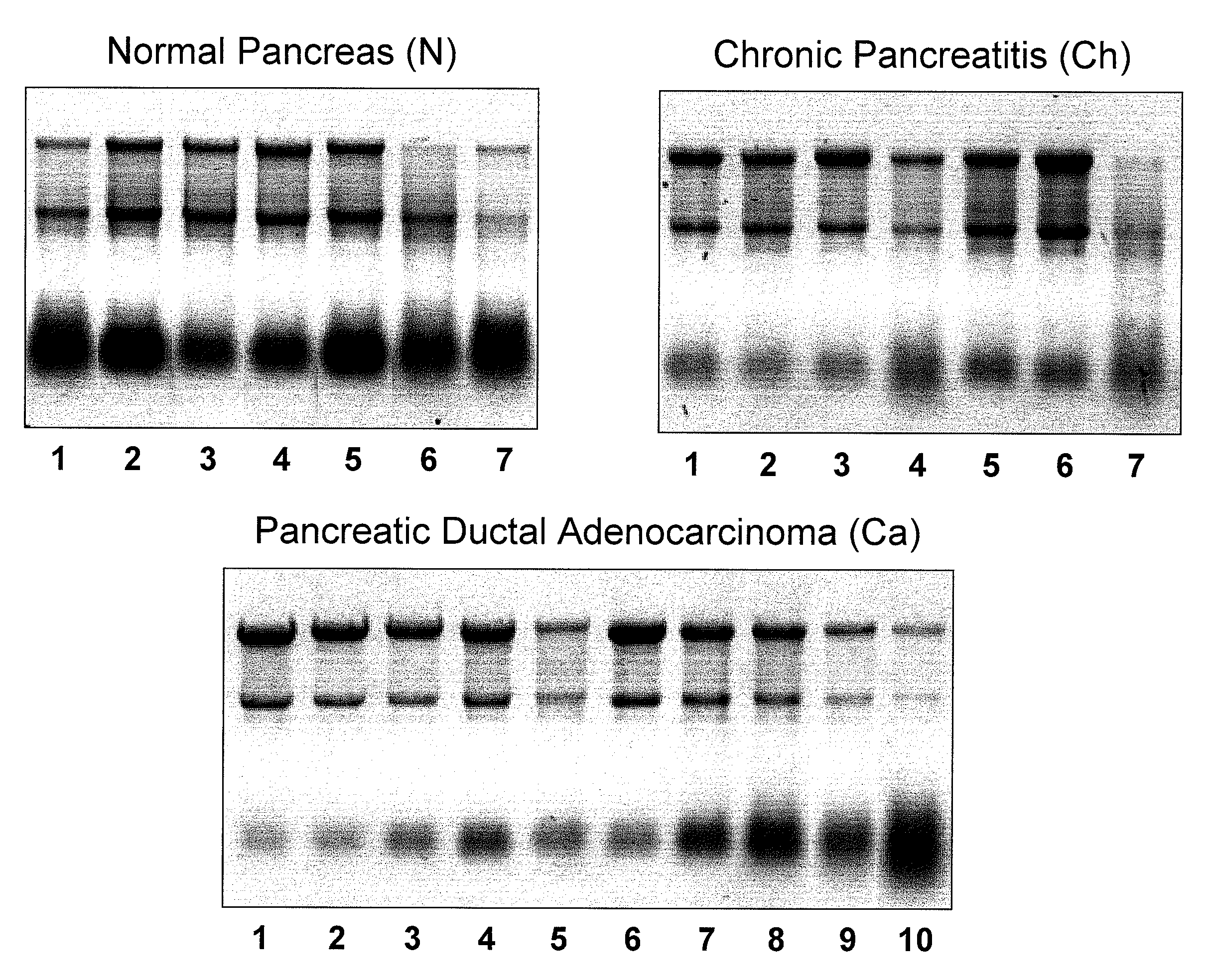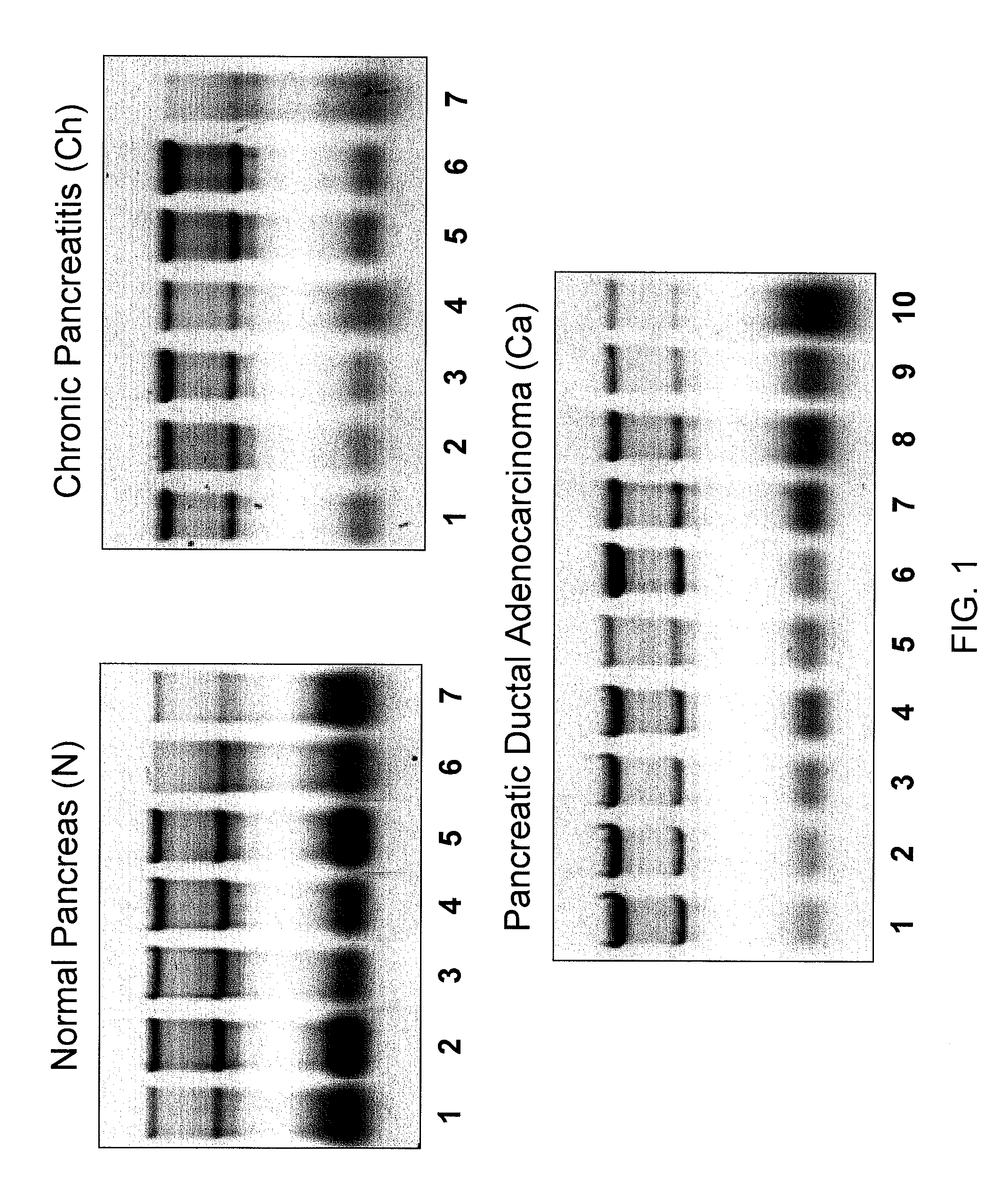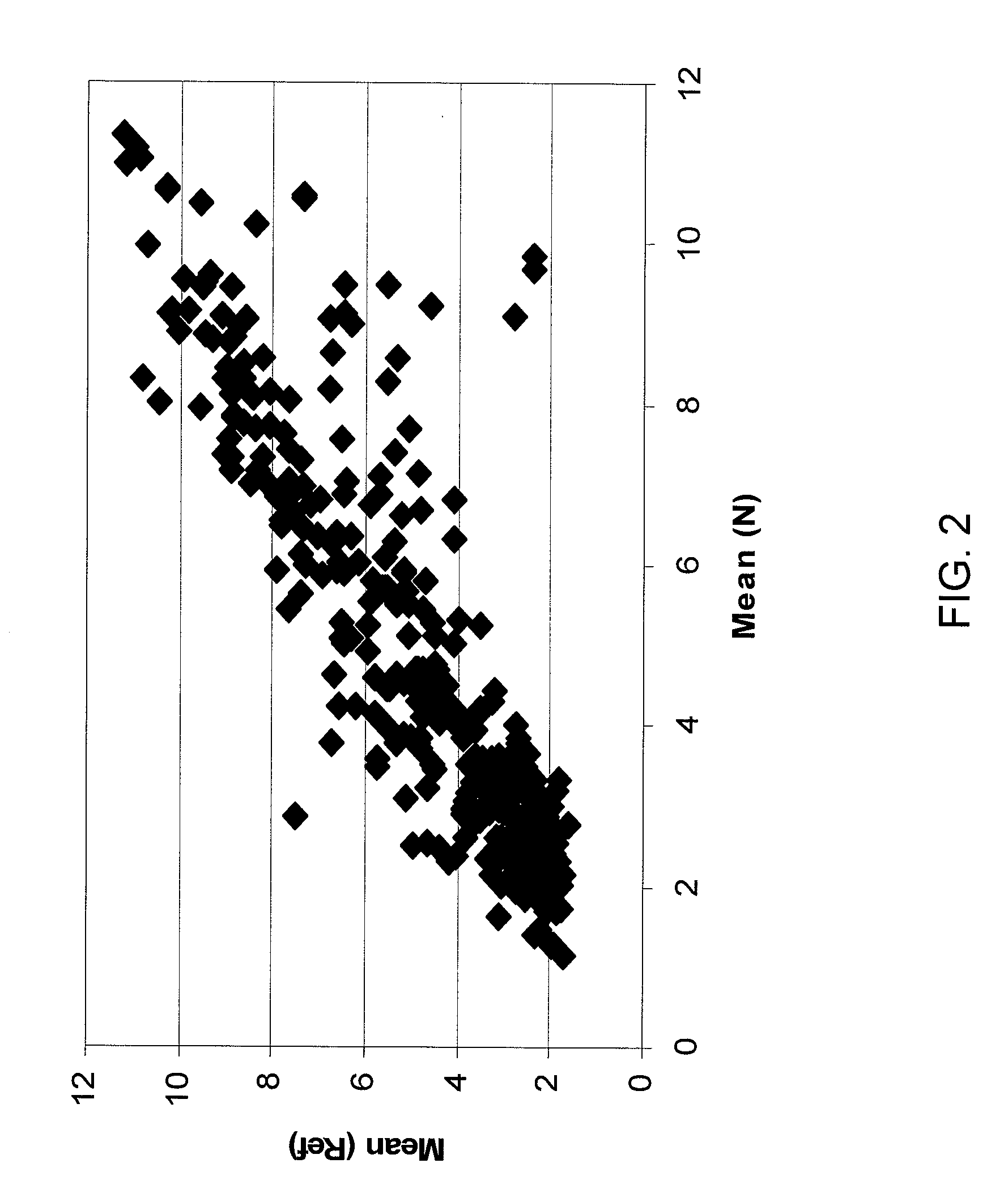Micrornas differentially expressed in pancreatic diseases and uses thereof
a technology of microrna applied in the field of molecular biology, can solve the problems of difficult differentiation lack of effective diagnostic methods and/or treatments, and difficulty in distinguishing between chronic pancreatitis and pancreatic cancer, so as to increase or decrease cell proliferation, and reduce cell proliferation
- Summary
- Abstract
- Description
- Claims
- Application Information
AI Technical Summary
Benefits of technology
Problems solved by technology
Method used
Image
Examples
example 1
Sample Collection and RNA Isolation
[0223]Six pancreatic primary ductal adenocarcinoma cell lines (IMIMPC2, PT45, PL45, SKPC1, PancTuI, PaCa44) and tissue samples from normal pancreas (N, n=7), chronic pancreatitis (Ch, n=7), and pancreatic ductal adenocarcinomas (PDAC) (Ca, n=10) were collected, flash frozen and stored at −80° C. The latter two diseased tissues were macro-dissected to remove as much normal pancreatic tissue as possible. Complete pathologic analyses were performed on all 24 tissue samples (Table 2). Thirteen fine needle aspirate (FNA) samples of diseased pancreatic tissue were collected during surgery and placed in RNARetain™ (Asuragen, Inc.; Austin, Tex.) within 30 minutes of collection and stored at 4° C.
[0224]RNA isolation was performed using the mirVana™ miRNA Isolation Kit (Ambion) according to the manufacturer's protocol. As isolation of high quality RNA from organs containing high levels of nucleases such as pancreas can be challenging, the integrity of the is...
example 2
[0225]miRNA Expression Profiling in Normal and Diseased Pancreatic Samples
[0226]miRNA expression profiling was performed as previously described (Shingara et al., 2005), except that the miRNA fractions recovered from 10-15 μg total RNA were labeled with Cy5 fluorescent dye (GE Healthcare Life Sciences) and hybridized to mirVana miRNA Bioarrays (Ambion) containing 377 individual miRNA probes, including 281 human miRNAs from the mirBase Sequence Database (on the world wide wed at microrna.sanger.ac.uk / ) (Griffiths-Jones et al., 2006), 33 new human miRNAs (Ambi-miR5) and 63 mouse or rat miRNAs from the mirBase Sequence Database. Following hybridization, the arrays were scanned using the Axon® GenePix 4000B scanner and associated GenePix software. Raw array data were normalized with the variance stabilization method (Huber et al., 2002).
[0227]Six pancreatic primary ductal adenocarcinoma cell lines, five normal pancreas tissue samples, six chronic pancreatitis tissue samples, and eight P...
example 3
The Pancreatic miRNome
[0228]As no comprehensive data set about miRNA expression in normal pancreas is currently available, the inventors first characterized the normal pancreatic miRNome. About 190 miRNAs were reproducibly detected above background signal in all five normal pancreas samples (Table 3, Mean (N)>2). These included 158 well characterized huma miRNAs and 21 miRNAs previously identified in mouse or rat. In addition, six new human miRNAs (Ambi-miR-7029, -7039, -7058, -7076, -7083 and -7105) were detected. Ambi-miR-7029 and -7058 had a highly significant expression level (Mean (N)>4). The inventors next performed a global comparison of expression data between the five normal pancreatic tissue samples and a reference set consisting of 33 different human tissues analyzed on the same array platform. The data are summarized in a global graphical representation of mean expression levels within each sample set (FIG. 2). The human reference set consisted of FirstChoice® Total RNA ...
PUM
 Login to View More
Login to View More Abstract
Description
Claims
Application Information
 Login to View More
Login to View More - R&D
- Intellectual Property
- Life Sciences
- Materials
- Tech Scout
- Unparalleled Data Quality
- Higher Quality Content
- 60% Fewer Hallucinations
Browse by: Latest US Patents, China's latest patents, Technical Efficacy Thesaurus, Application Domain, Technology Topic, Popular Technical Reports.
© 2025 PatSnap. All rights reserved.Legal|Privacy policy|Modern Slavery Act Transparency Statement|Sitemap|About US| Contact US: help@patsnap.com



